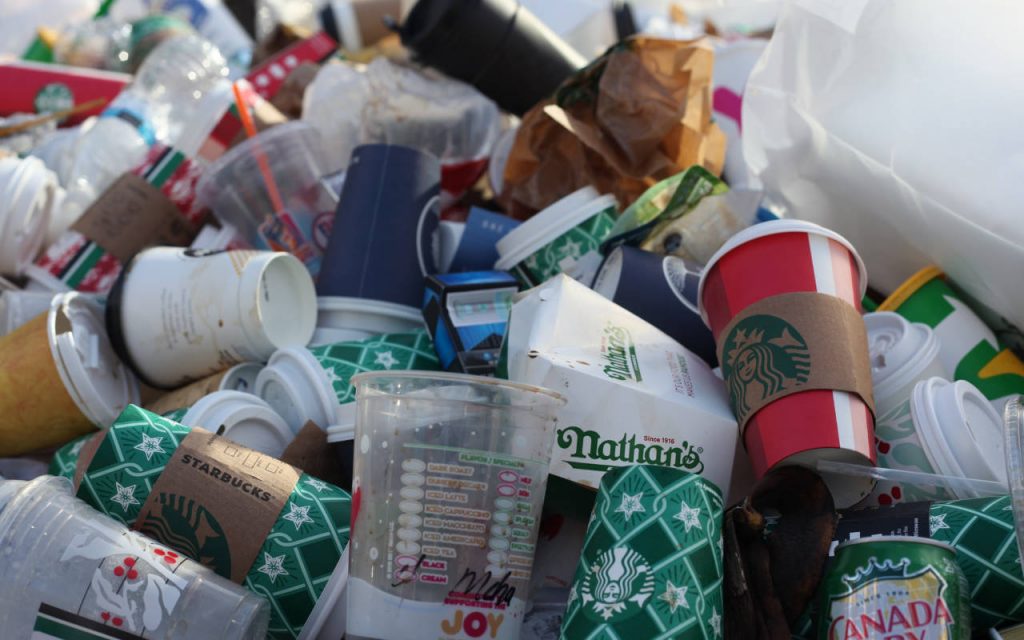If there’s one thing we know for sure from working in packaging, it’s that packaging solutions are complex. And nowhere is this more evident than in the environmental impact of packaging.
In previous discussions and blog posts, we’ve investigated recycled plastics, biodegradable and compostable plastics, the use of glass, cardboard and paper – but there’s no “silver bullet”. Everything in packaging is a compromise, and that’s also true when you’re trying to make packaging better for the environment.
Cardboard and paper are publicly viewed as the best packaging for the environment. But is that true?
Card and paper are heavier than plastic, and therefore more expensive and carbon-polluting to transport. Producing – and even recycling these materials – is highly water-intensive. And it can’t package wet items, without being treated and coated in such a way that it becomes harder to recycle or decompose.
Plastic has a far wider spectrum of use, but it doesn’t have a great public image; that’s in spite of it being essential to the delivery and storage of essential everyday items, and the low prices consumers demand for their products.
But, maybe by balancing different packaging materials and using good design principles, any company can make packaging better for the environment without having to compromise too heavily.

It all starts with packaging design
Design is perhaps the most important influence on how to make your packaging better for the environment. Material choice, reducing waste and bespoke packaging for each product are, in the long run, going to add up to the most environmental gains with current technology.
Packaging design is more than just making your packaging look good; it’s first and foremost a protective shield and a storage solution. It has to be as useful as it is attractive.
And that use can extend further than just the initial packaging purpose.
Design with the life cycle in mind
Think of the life cycle of your packaging. As an example, polythene bags can be reused time and again before being recycled or discarded. Plastic bottles can be refilled, and cardboard boxes can be used again as storage or shipping boxes, without having to recycle them.
Think of the transport costs in terms of weight and resource required to move your product; that’s going to be part of the life cycle at key points, including disposal. Think of common, popular and reusable formats of packaging, and try to apply them to your own packaging design. Try to choose packaging materials that are reusable or widely recyclable, to limit the impact on the environment.
And always design your packaging to fulfil a specific need. While general use packaging is simpler in the short-term, it can be highly wasteful.
Package based on need
By using larger boxes and applying a one-size-fits-all mentality to your packaging, you waste more than just packaging materials. Void-fillers, like foam packaging peanuts or air bags, need to be used to prevent boxes from collapsing or goods being rattled and damaged within their packaging – but using too much packaging also makes transportation less efficient.
It’s not just the extra weight, it’s the space, too. If a poorly-designed packaging solution takes up more space in a shipping container or delivery van, the fewer units can be shipped at a time. This results in more cargo movements, higher costs and higher CO2 emissions. One of the most important elements of packaging design is considering this aspect, and designing packaging that mitigates it.
Use recycled and recyclable polythene
Polythene packaging is essential for the way we live. Without it, we wouldn’t have the range and affordability of food that we do today, or the products that we take for granted.
But it should still be used wisely. And it should alway be recycled.
Recyclable polythene packaging has an abundance of uses after its primary purpose has been fulfilled. But all too often, it ends up in landfill. The fact is, most recycled polythene has similar properties to virgin material, and could be processed for use in many of the packaging applications we use daily.
Recycled polythene is still extremely useful. But to be of use, it has to get recycled in the first place, and one of the biggest hurdles to doing so is convincing end users to dispose of their packaging sustainably.
Educate your end users – promote recycling
One of the key barriers to recycling is education. For example – did you know that used cardboard pizza boxes don’t usually get recycled? It’s because the fats and foodstuffs that soak into it during transit make the cardboard too difficult to process, and most recycling centres reject them as a result. People still put their pizza boxes in recycling bins, though, hoping to make a difference.
Polythene doesn’t have the same problem, but it’s often seen as less recyclable. It’s normally fully recyclable – especially pre-consumer material. Local recycling initiatives can be used by both industry and individuals to recycle wrapping, bags and other types of polythene packaging.
And one way to help this happen is to promote recycling on your packaging.
Polythene packaging can be printed on, which is useful for lots of reasons – but imagine giving your end users a complete set of instructions on how to recycle their packaging after use. As we search for solutions to manage waste, educating and promoting recycling is one of the best ways to make your packaging better for the environment.
Polythene packaging solutions that won’t cost the Earth
Talk to our friendly team of packaging experts at NPF Packaging, specialists in recycled and recyclable polythene. Start your order for fully recyclable polythene packaging products and custom-made cardboard packaging. Get a quote now, or call us on 01773 820415.


